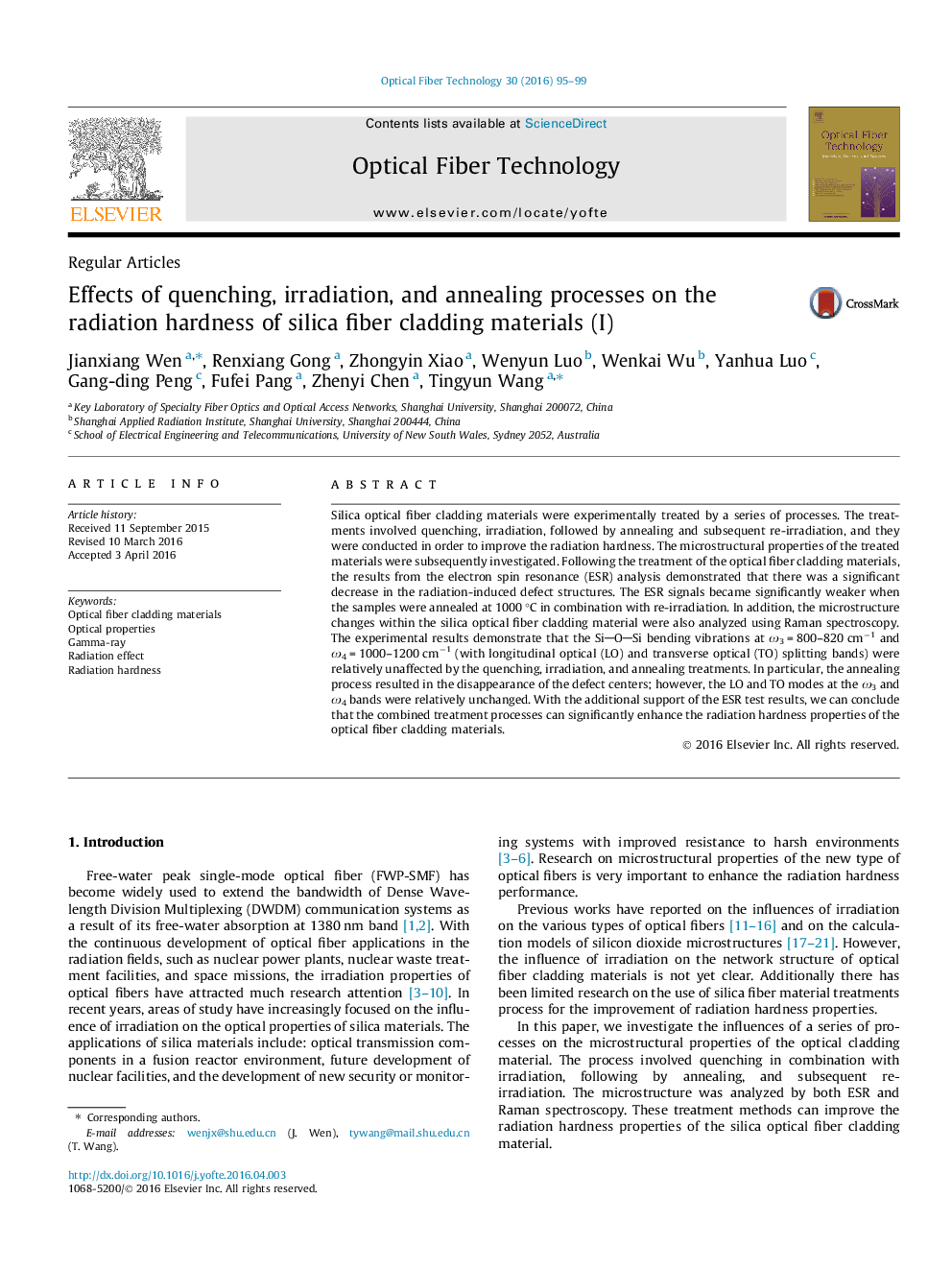| Article ID | Journal | Published Year | Pages | File Type |
|---|---|---|---|---|
| 462351 | Optical Fiber Technology | 2016 | 5 Pages |
•We have experimentally investigated the micro structural properties of silica optical fiber cladding materials by a series of processes. The treatments involved quenching, irradiation, followed by annealing and subsequent re-irradiation, and they were conducted in order to improve the radiation hardness.•The electron spin resonance analysis demonstrated that there was a significant decrease in the radiation-induced defect structures. The ESR signals became significantly weaker when the samples were annealed at 1000 °C in combination with re-irradiation.•The microstructure changes within the silica optical fiber cladding material were also analyzed using Raman spectroscopy. The experimental results demonstrate that the SiOSi bending vibrations at ω3 = 800–820 cm−1 and ω4 = 1000–1200 cm−1 (with longitudinal optical (LO) and transverse optical (TO) splitting bands) were relatively unaffected by the quenching, irradiation, and annealing treatments. The annealing process resulted in the disappearance of the defect centers; however, the LO and TO modes at the ω3 and ω4 bands were relatively unchanged.•With the additional support of the ESR test results, we can conclude that the combined treatment processes can significantly enhance the radiation hardness properties of the optical fiber cladding materials.
Silica optical fiber cladding materials were experimentally treated by a series of processes. The treatments involved quenching, irradiation, followed by annealing and subsequent re-irradiation, and they were conducted in order to improve the radiation hardness. The microstructural properties of the treated materials were subsequently investigated. Following the treatment of the optical fiber cladding materials, the results from the electron spin resonance (ESR) analysis demonstrated that there was a significant decrease in the radiation-induced defect structures. The ESR signals became significantly weaker when the samples were annealed at 1000 °C in combination with re-irradiation. In addition, the microstructure changes within the silica optical fiber cladding material were also analyzed using Raman spectroscopy. The experimental results demonstrate that the SiOSi bending vibrations at ω3 = 800–820 cm−1 and ω4 = 1000–1200 cm−1 (with longitudinal optical (LO) and transverse optical (TO) splitting bands) were relatively unaffected by the quenching, irradiation, and annealing treatments. In particular, the annealing process resulted in the disappearance of the defect centers; however, the LO and TO modes at the ω3 and ω4 bands were relatively unchanged. With the additional support of the ESR test results, we can conclude that the combined treatment processes can significantly enhance the radiation hardness properties of the optical fiber cladding materials.
